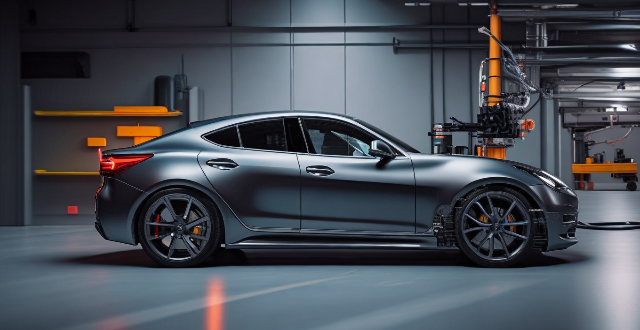A hybrid car uses a combination of an internal combustion engine and electric motors to achieve better fuel economy and reduced emissions. It consists of key components like the ICE, electric motor(s), battery pack, transmission, control unit, and a charging system that includes regenerative braking. The car operates in various modes: starting with the electric motor, driving with either or both power sources, using regenerative braking for efficiency and battery charging, minimizing idling by shutting down the ICE at stops, and managing the battery's state of charge and health. Benefits include improved gas mileage, lower emissions, enhanced performance, and reduced wear and tear on vehicle components.

How Does a Hybrid Car Work?
A hybrid car is an automobile that uses two or more distinct types of power. The most common type is the hybrid electric vehicle (HEV), which combines internal combustion engine (ICE) and electric propulsion motors powered by energy stored in batteries.
Main Parts of a Hybrid Car:
- Internal Combustion Engine (ICE): This is the conventional gasoline or diesel engine found in most cars. It is used to generate power for the vehicle and also to charge the batteries.
- Electric Motor(s): These are used to drive the wheels directly, using electricity from the battery pack. They can also act as generators when braking or coasting, converting kinetic energy into electrical energy to recharge the batteries.
- Battery Pack: A large collection of batteries that stores energy for use by the electric motor(s).
- Transmission: This connects the engine and/or motor(s) to the drivetrain and varies the gear ratio to provide optimal performance and fuel economy.
- Control Unit: This is the brain of the hybrid system, managing the flow of power between the ICE, electric motor(s), and battery pack.
- Charging System: This may include components like regenerative braking systems that capture energy normally lost during deceleration and use it to recharge the battery pack.
Working Principle:
1. Starting Up: When you start a hybrid car, it often uses only the electric motor for quiet and vibration-free operation. The ICE turns on when more power is needed or when the battery's state of charge falls below a certain level.
2. Driving: Under light loads or cruising conditions, the electric motor might be the sole source of power. As demand increases, such as for acceleration, both the ICE and electric motor work together to provide the necessary power.
3. Regenerative Braking: When slowing down or braking, the electric motor acts as a generator, converting the car's kinetic energy into electricity to recharge the batteries. This not only improves efficiency but also reduces wear on the brakes.
4. Idle and Shutdown: At a stop, such as at a red light, the ICE can turn off automatically to save fuel. The car remains ready to move as soon as the accelerator is pressed, using the electric motor for immediate response.
5. Battery Management: The control unit constantly monitors the battery's state of charge and health, ensuring that it operates within safe limits and is charged appropriately by the ICE and regenerative braking.
Benefits of Hybrid Cars:
- Fuel Economy: Hybrids typically offer better gas mileage than their purely gasoline-powered counterparts.
- Reduced Emissions: By using less gasoline and employing regenerative braking, hybrid cars produce fewer emissions overall.
- Improved Performance: Electric motors provide instant torque, leading to responsive acceleration and support from the ICE for robust power delivery.
- Less Wear and Tear: Regenerative braking and start-stop systems reduce the wear on brakes and other components.
In summary, a hybrid car intelligently blends the power sources to optimize efficiency and performance while minimizing environmental impact.